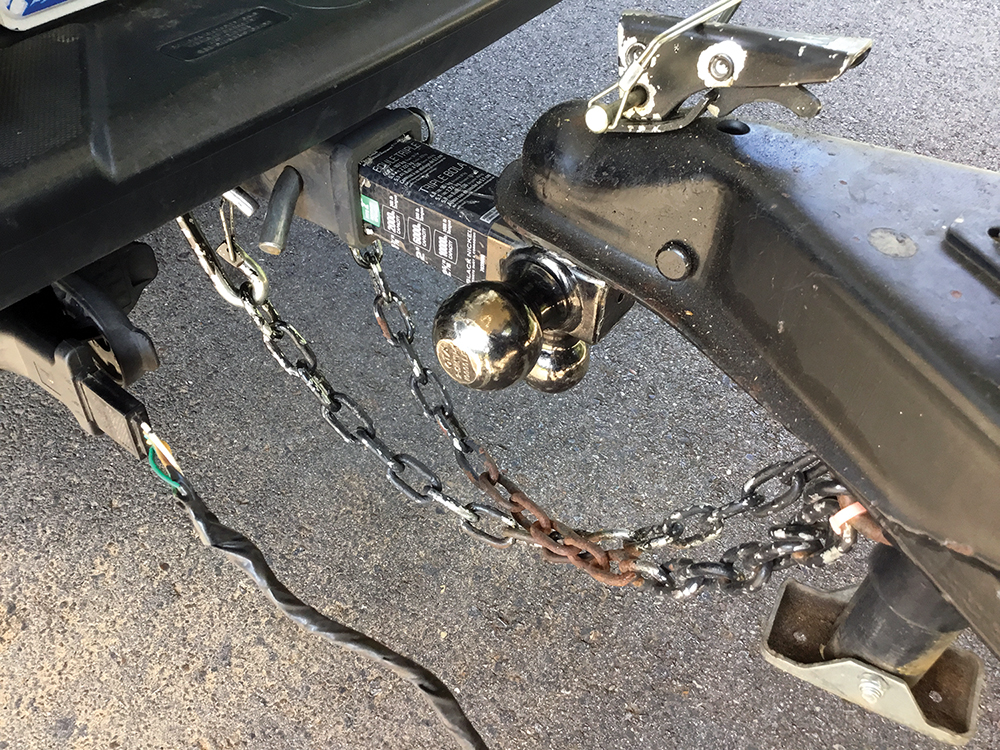 With summer approaching, you may be getting ready to tow a boat up to the lake, or a trailer across the country for vacation. Or maybe you just need to haul some brush off your property on a small flatbed trailer.
With summer approaching, you may be getting ready to tow a boat up to the lake, or a trailer across the country for vacation. Or maybe you just need to haul some brush off your property on a small flatbed trailer.
No matter the distance or the size of the haul, towing a trailer, automobile or boat can be dangerous, and requires skill beyond operating a normal vehicle.
Some trailer accidents may be unavoidable, such as when road debris blows a tire. Accidents can happen to even the most seasoned and safety-conscious drivers.
But many trailer accidents are preventable. Human error can be involved when drivers don’t understand how to safely attach a trailer to a truck. Using trailers safely isn’t just a matter of safety for you – it matters to every other driver you’ll encounter on the road when you get behind the wheel.
A father and his 3-year-old daughter in Minnesota were killed on Memorial Day weekend in 2013 when an empty flatbed trailer unhitched from the pickup truck that was pulling it. The trailer crossed the center of the road and plowed hitch-first through the windshield of an SUV driven by Jeremy Cox, according to a story from KARE, a TV station in Minneapolis. Cox and one of his children in the SUV were killed in the accident.
A state patrol investigation revealed that a clip was missing from the bottom of a hitch pin, allowing the trailer to break free before it slammed into the SUV. Further evidence showed one of the trailer’s two safety chains was also missing.
Alabama State Troopers caution drivers towing any attachment to make sure that attachment is secure and loaded properly to prevent a crash. “All attachments need to be properly lit, and users should follow manufacturer’s towing specifications,” says Cpl. Jess Thornton of the Alabama Law Enforcement Agency (ALEA). Federal law requires trailers to have working taillights, brake lights, side marker lights, turn signals and side and rear reflectors.
The three crucial components in most tow packages are the hitch (the device that attaches directly to a tow vehicle, providing the connection between the tow vehicle and the trailer); the hitch ball (the ball-shaped attachment to a hitch where the trailer coupler is attached); and the coupler (used to secure the trailer to the towing vehicle). The hitch and the coupler must be the same size.
Before towing, consider how much weight the truck can carry and tow at the same time. The tag located in the truck’s doorjamb or behind its seat provides its gross combination weight rating (GCWR) — the GCWR is also provided in the truck manual.
A truck’s GCWR is the maximum weight it can haul and pull. GCWR includes the weight of the truck, the trailer it’s towing, and the total cargo carried in the truck and on the trailer. Exceeding a truck’s GCWR can have consequences similar to towing more than what the truck is designed to pull.
Never exceed the recommended maximum towing capacity of the tow vehicle or the trailer. In general, the trailer you are carrying should never outweigh the tow vehicle you’re driving.
Follow the manufacturers’ towing specifications for the tow vehicle, trailer and all of the tow package components.
Make sure any kind of hitch you use has provisions for the connection of safety chains, which keep the trailer connected to the tow vehicle should the coupler or hitch ball detach from the tow vehicle. The chains should cross under the trailer tongue to prevent the tongue from dropping to the road if the trailer were to separate from the tow vehicle.
The chains should have some slack to permit sharp turns, but not drag the road. Don’t wrap the safety chains around the hitch ball. Fasten them to a solid area of the framework or to the area of the auto hitch designed for that purpose.
Also remember to exercise care when loading the trailer. It’s best to center loads over the trailer’s axle and slightly forward to get some tongue weight on the hitch. A general recommendation is to get about 65 percent of the trailer’s gross weight forward of the midpoint.
Sources: “Towing Safety,” prepared by Auburn University Risk Management and Safety; and “Keep the Trailer Connected to the Truck,” prepared by Purdue Extension Service.
Michael Kelley is director of Safety, Loss Control and regulatory compliance for the Alabama Rural Electric Association.





